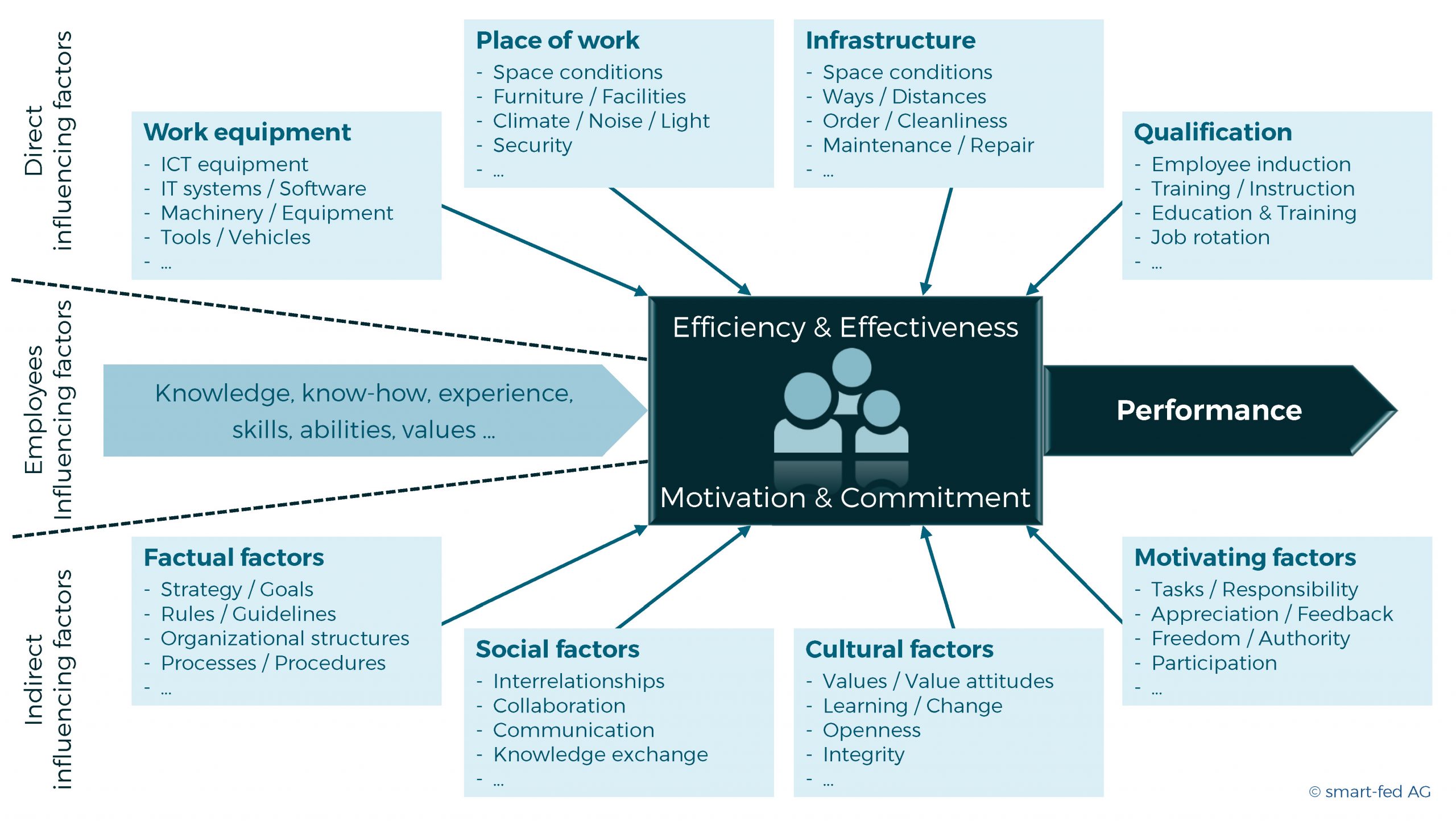Using employee resources efficiently and effectively
Using employee resources efficiently and effectively
Employees are among the most expensive, but also the most valuable resources in a company. For this reason, it has always been essential to use this resource as efficiently and effectively as possible. But what was already a challenge in the past is becoming even more complex and demanding in the NEW WORK working world.
This is because the efficiency and effectiveness of employees is influenced by a variety of factors in different ways.
The figure on the right divides these into direct, indirect and employee-related influencing factors.
However, the focus of this article is not on the factors themselves, but on how they can be managed efficiently and effectively as a whole in order to make the best possible use of the expensive resource of employees, i.e. to achieve maximum performance.
Increasing dynamics of the factors
First of all, the good news. Only a fraction of the factors shown in the illustration are ultimately relevant for the efficiency and effectiveness of employees. From experience, there are hardly more than a dozen that play a decisive role in the daily work routine.
The bad news is that these vary, not only within the company between different departments, teams or locations, but also over time. Often, all it takes are small changes, e.g. new tools or team members, which for whatever reason can have a positive or negative impact on efficiency or effectiveness.
This dynamic will be even more pronounced in modern organizational forms with fluid teams and projects or changing workplaces and work locations.
Management in the past and today
In the past, many disruptions were intercepted by supervisors on site. They were able to identify them quickly and react efficiently when changes in influencing factors had a negative impact on employee performance.
In the NEW WORK world of work with hybrid work structures and an agile or-ganization with flat hierarchies, this is becoming increasingly difficult to almost impossible.
An alternative to intervention by supervisors is cross-organizational employee experience management, based on the findings of employee surveys.
However, the focus of these surveys was, and still is, more on indirect influencing factors, and there in particular on topics such as motivation and commitment.
As essential as appreciation, freedom and participation are for the general willingness of employees to perform, they remain only one piece of the overall puzzle in terms of efficiency and effectiveness.
Ultimately, any shortcoming in a direct or indirect factor can affect efficiency or effectiveness. It can be related to a single team, to entire departments, or even to the entire company. How strong the influence is, depends decisively on the perception and the relevance for the employ-ees in everyday life.
Management of the future
What consequences does all this have for the management of influencing factors in the future? We need a management tool that has the following capabilities for a highly complex and dynamic working world:
- It must ensure a comprehensive and continuous scan of all direct and indirect influencing factors.
- It must provide managers who have infrequent contact with their employees and teams (e.g., in decentralized organizations, working from home, or remote work) with timely information when disturbances begin to impact efficiency and effectiveness.
- It must enable precise, organization-specific localization of disturbances.
- It must be possible to quickly identify the specific causes of disturbances.
- It must provide a temporal and quantitative context to properly assess disturbances in terms of their impact.
- It must provide feedback on whether and how measures to correct a malfunction have had an effect.
All these requirements in terms of a future-oriented management tool are met with the feedback app from SMART FED
It works like a seismograph, showing in real-time where things are shaking in the organization, i.e. where disturbances are affecting efficiency and effectiveness.
⇒ Author: Martin Mechlinski / SMART FED








